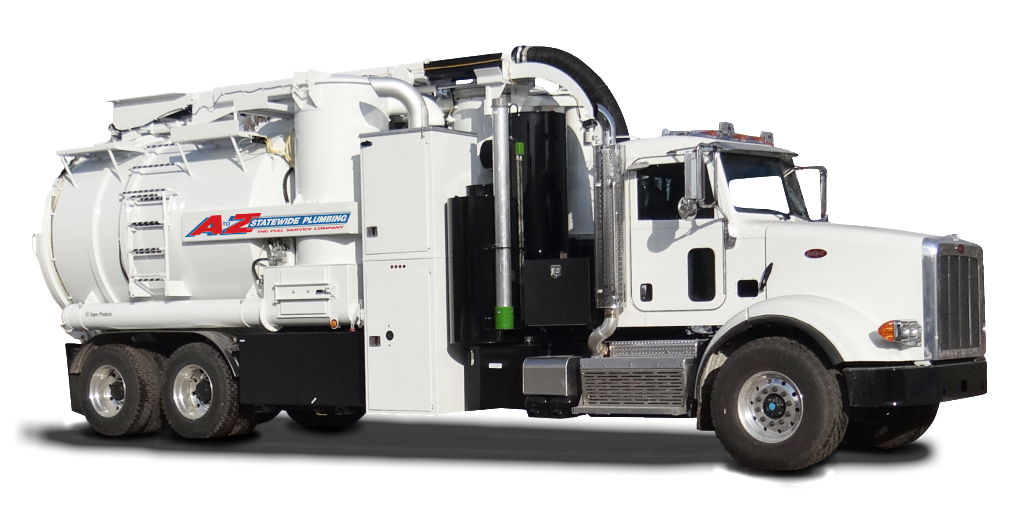Are These Toilet Paper Alternatives Safe for Your Plumbing?

If you’ve ever found yourself in the unfortunate position of being without toilet paper when you’ve really got to go, you may have resorted to desperate searches online to find out if there are safe alternatives. It’s often impossible to sort through fact and fiction online these days; fortunately, we’ve compiled all the information you need to make an educated decision regarding toilet paper alternatives and your plumbing system.
The Truth About Flushable Wipes & Your Plumbing System
You may have heard of flushable wipes and wonder if they are a safe alternative to toilet paper. These can be a great asset if you’re potty training a young child or looking for a better clean for yourself. They also come in handy if you’re the outdoorsy type – think camping, hiking, or anything else that gets you away from your normal toilet amenities.
These wipes are useful in a variety of situations, but it’s never a good idea to introduce them to your plumbing system. The truth is, while flushable wipes will eventually break down in your system, they take significantly longer than regular toilet paper, meaning you could find yourself with a costly clog if they make their way down your toilet.
What Not to Flush Down Your Toilet
While it’s tempting to flush napkins or wipes rather than toss them in the trash bin, it’s better in the long run to avoid it. There are certain items that should never make their way through your plumbing system, as they could result in the need for expensive plumbing repairs. These items include:
- Facial tissues
- Baby wipes, disinfectant wipes, moist wipes, etc.
- Toilet bowl scrub pads
- Napkins (paper or cloth), paper towels
- Dental floss
- Eggshells, nutshells, and coffee grounds
- Fats, oils, and greases
- Hair
- Sanitary napkins, tampons, condoms, or any non-organic material
- Cotton balls or Q-tips
- Vitamins, medicines, or other pharmaceuticals
- Plastic of any kind
- Diapers (cloth, disposable, and those deemed “flushable”)
We understand that accidents happen, and if you find that you have a clog from one of the above items being flushed down your toilet, or anything else, remain calm and contact your local plumbing experts. Len The Plumber can eliminate your clog quickly, any time!
Worry-Free Flushability for Your Plumbing System
When it comes to what you can and can’t flush, a good rule of thumb is to stick to the basics. Human waste, water, and toilet paper are the only things that should go down your toilet. Even thick toilet paper should be used sparingly per flush to ensure it is able to fully break down without clogs.
So, what should you do if you find yourself without toilet paper? It turns out, if you have access to clean water, then you actually have a safe and effective toilet paper alternative that poses no risk to your home’s plumbing system! If you’ve ever heard of a bidet, or experienced one for yourself, you know that it’s a type of toilet that provides a stream of water to clean yourself up after using the restroom. Bidets were developed in the early 1700s and are extremely common throughout Europe, Asia, and South America – over 90% of households have them installed in their bathrooms.
While you could have your own personal bidet installed by Len The Plumber, here’s another alternative: a perineal irrigation bottle, or peri bottle. This is essentially a plastic squirt bottle. These bottles are affordable, can easily be purchased online, and provide a clean that is unmatched after you’ve used the restroom. After using one of these, you may decide to ditch toilet paper altogether! Either way, peri bottles are a much safer option than flushing napkins or tissues down the toilet.
What can you do with all those flushable wipes you purchased as a toilet paper alternative?
While wipes may not be suited for your toilet, there are still plenty of ways to utilize your wet-wipe stockpile, including:
- Wiping pollen from your hair in the spring
- Cleaning scuff marks off your shoes
- Wiping your pet’s paws on rainy days
- Cleaning dust from your houseplants
- Removing eye makeup
There are tons of other unconventional uses for your wipes, just make sure they end up in the trash bin and not your plumbing system!
If you have a clog and need professional plumbing services, give Len The Plumber a call at 800-950-4619 or contact us online to schedule an appointment! We’ll get things flowing smoothly again in no time!
This post first appeared on https://lentheplumber.com
 On a nice spring day, take a few minutes to inspect the area around your air conditioning unit outside. It’s usually a good idea to cover the unit during the winter with a cover or tarp to keep dirt, leaves, and other debris from falling into it. If you covered your condenser, take the cover off before you switch the unit on for the first time in the summer. Leaving the outside AC unit covered will impede airflow, forcing it to work harder and meaning that you need air conditioning repair in Pittsburgh, PA.
On a nice spring day, take a few minutes to inspect the area around your air conditioning unit outside. It’s usually a good idea to cover the unit during the winter with a cover or tarp to keep dirt, leaves, and other debris from falling into it. If you covered your condenser, take the cover off before you switch the unit on for the first time in the summer. Leaving the outside AC unit covered will impede airflow, forcing it to work harder and meaning that you need air conditioning repair in Pittsburgh, PA.


 The slab leak is a common problem in home plumbing, and unfortunately, it’s one of the most difficult to notice at first. The reason is right in the name: the leaks come from pipes that are buried down in the granite slab foundation of a home. A pipe could leak for months before it begins to show overt signs of what’s happening, and by that point, it will have wasted large amounts of water and inflicted damage to the building.
The slab leak is a common problem in home plumbing, and unfortunately, it’s one of the most difficult to notice at first. The reason is right in the name: the leaks come from pipes that are buried down in the granite slab foundation of a home. A pipe could leak for months before it begins to show overt signs of what’s happening, and by that point, it will have wasted large amounts of water and inflicted damage to the building.



 Sure, you could read the title of this blog post and panic because nobody wants the worst problems possible to be occurring in their furnace. However, we’d like to offer a positive spin on this news as finding out there’s a problem with your furnace and dealing with it might be a better scenario than many homeowners might think.
Sure, you could read the title of this blog post and panic because nobody wants the worst problems possible to be occurring in their furnace. However, we’d like to offer a positive spin on this news as finding out there’s a problem with your furnace and dealing with it might be a better scenario than many homeowners might think. There’s nothing worse than waking up in the middle of the night to a burst pipe or an overflowing toilet. In fact, no plumbing issue, no matter how seemingly small, is fun to deal with. That’s why some plumbing companies (like us) offer emergency plumbing services!
There’s nothing worse than waking up in the middle of the night to a burst pipe or an overflowing toilet. In fact, no plumbing issue, no matter how seemingly small, is fun to deal with. That’s why some plumbing companies (like us) offer emergency plumbing services!